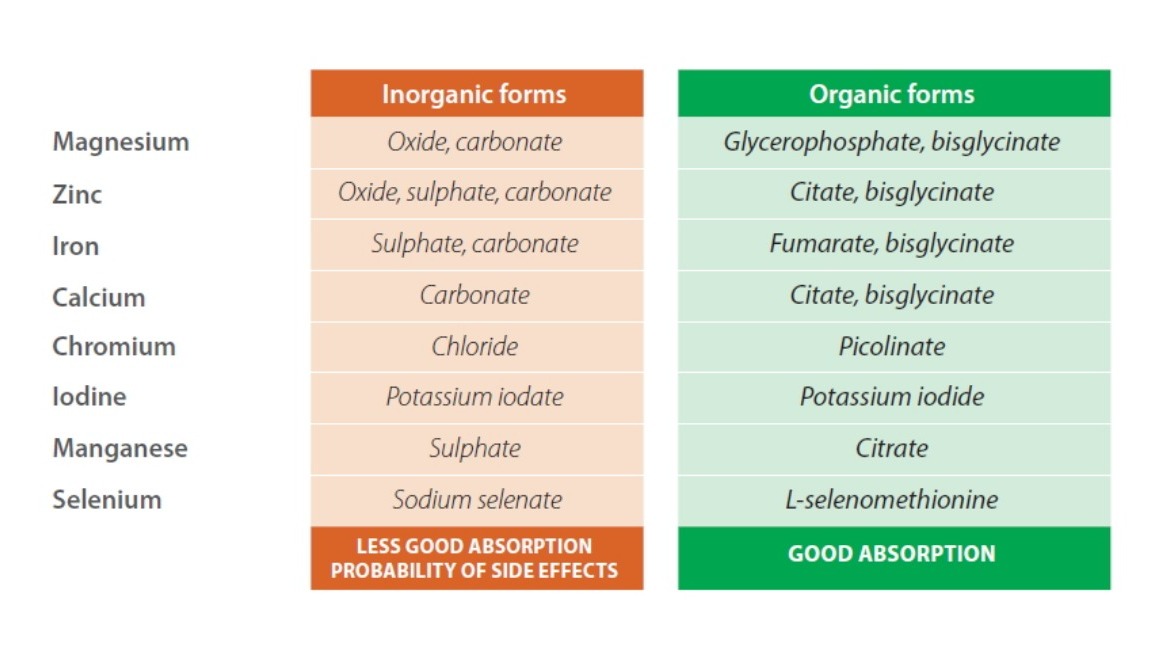The importance of high bioavailability
Selecting ingredients with high bioavailability is not only important to ensure they are properly absorbed by the body, it also prevents the occurrence of any discomfort.
The form of the mineral is key
The bioavailability of inorganic mineral salts like sulphates, carbonates and oxides is very low. They are characterised by very low solubility, but if they do dissolve in the stomach they disassociate into a salt and the mineral (charged ion) and irritate the stomach wall or bind to other nutrients to form insoluble and unabsorbable compounds. An electrolytic imbalance is created that can lead to irritated bowels and reduced absorption of nutrients by the body. Selecting organic mineral salts that dissolve well, such as citrates, fumarates and glycerophosphates or chelates that do not disassociate in the stomach (such as bisglycinates) can result in optimal absorption.

Never look only at the dose of the nutrient, always check the form the nutrient comes in
The dose of inorganic mineral forms is often very high, so that the body is able to absorb an adequate amount. However, this increases the risk of side effects. The use of organic mineral forms (high bioavailability) makes this unnecessary, so the dose can be optimised to achieve the desired effect. That is known as the correct dose or intake of the nutrient. Metagenics is committed to only using organic mineral salts or chelates in its products.
Products with high bioavailability
Metagenics is committed to only using organic mineral forms in its products.
